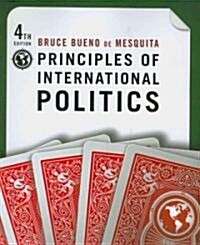
Neoclassical realism, the state, and foreign policy
- 발행사항
- Cambridge, UK ; New York : Cambridge University Press, 2009
- 형태사항
- xi, 310 p.; 24 cm
- ISBN
- 9780521731928
- 청구기호
- 349.01 L797n
- 서지주기
- Includes bibliographical references and index
소장정보
| 위치 | 등록번호 | 청구기호 / 출력 | 상태 | 반납예정일 |
|---|---|---|---|---|
이용 가능 (1) | ||||
| 1자료실 | 00014851 | 대출가능 | - | |
- 등록번호
- 00014851
- 상태/반납예정일
- 대출가능
- -
- 위치/청구기호(출력)
- 1자료실
책 소개
This book argues that the internal dynamics of states affect their foreign policies, as well as the nature of the international system.
목차
1. Introduction: neoclassical realism, the state, and foreign policy Jeffrey W. Taliaferro, Steven E. Lobell and Norrin M. Ripsman; 2. Threat assessment, the state, and foreign policy: a neoclassical realist model Steven E. Lobell; 3. Neoclassical realism and strategic calculations: explaining divergent British, French, and Soviet strategies toward Germany between the world wars (1919?39) Mark R. Brawley; 4. Neoclassical realism and identity: peril despite profit across the Taiwan Strait Jennifer Sterling-Folker; 5. Neoclassical realism and the national interests: presidents, domestic politics, and major military interventions Colin Dueck; 6. Neoclassical realism and domestic interest groups Norrin M. Ripsman; 7. Neoclassical realism and resource extraction: state building for future war Jeffrey W. Taliaferro; 8. Neoclassical realism and state mobilization: expansionist ideology in the age of mass politics Randall L. Schweller; 9. The limits of neoclassical realism: additive and interactive approaches to explaining foreign policy preferences Benjamin O. Fordham; 10. Conclusion: the state of neoclassical realism Norrin M. Ripsman, Jeffrey W. Taliaferro and Steven E. Lobell.


